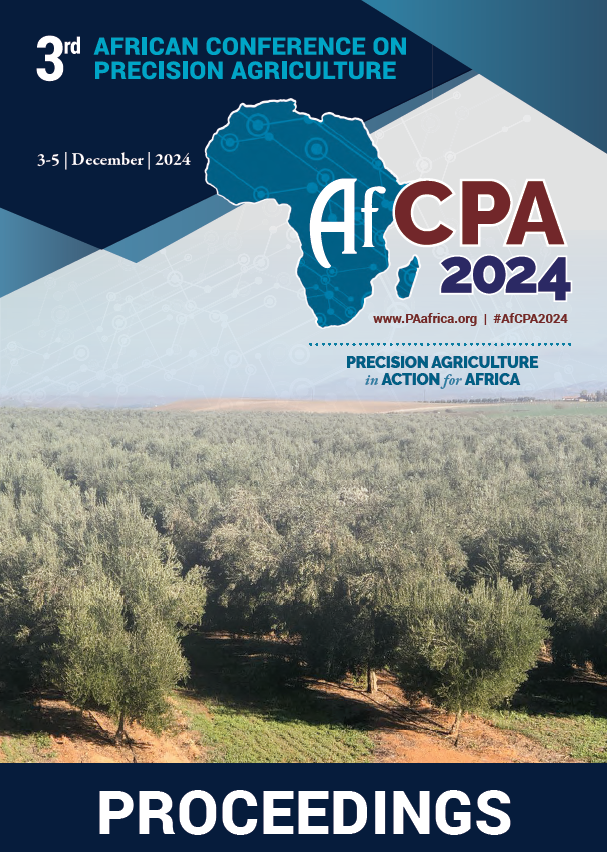Download the Conference Proceedings
Proceedings
Authors
| Filter results3 paper(s) found. |
|---|
1. Monitoring Corn (Zea mays) Yield using Sentinel-2 and Machine Learning for Precision Agriculture ApplicationsCurrently, there is a growing demand to apply precision agriculture (PA) management practices at agricultural fields expecting more efficient and more profitable management. One of PA principal components for site-specific management is crop yield monitoring which varies temporally between seasons and spatially within-field. In this study, we investigated the possibility of monitoring within-field variability of corn grain yield in a 22ha field located in Ferarra, North Italy. Archived yield data... A. Kayad, M. Sozzi, F. Pirotti, F. Marinello, L. Sartori, S. Gatto |
2. LiDAR-based soybean crop segmentation for autonomous navigationThe technological advances in the last few decades have greatly changed agricultural operations. In order to became safer, more profitable, efficient, and sustainable, modern farms have adopted the use of sophisticated technologies, such as robots, sensors, aerial images, and GNSS (Global Navigation Satellite System). These technologies not only increase the crop productivity, but also reduce the wide use of water, fertilisers, and pesticides. Due to this, they reduce costs and negative environmental... V.A. Higuti, A.E. Velasquez, M.V. Gasparino, D.V. Magalhães, M. Becker, D.M. Milori, R.V. Aroca |
3. Soil organic carbon mapping in Tunisia: comparison of different interpolation methodsSoil organic carbon (SOC) stock is an important carbon pool in terrestrial ecosystems. It plays an important role in agricultural productivity and is often used as a key indicator of soil quality whether for soil fertility or climate regulation. SOC stocks are difficult to estimate due to the large spatial variability. In this way, many different techniques have been conducted for predicting and mapping SOC content. However, although numerous techniques are in use, there is still debate on which... M. Barbouchi, H. Bahri, A. Souissi, H. Cheikh m'hamed, M. Annabi |
